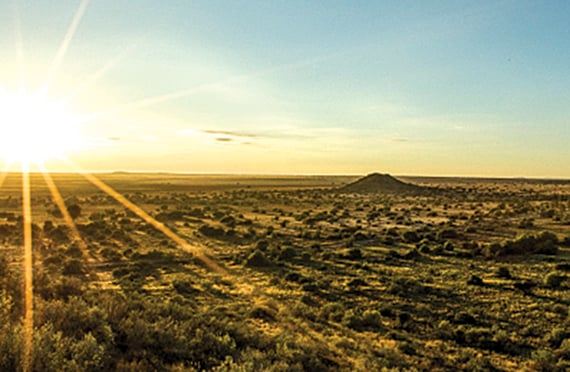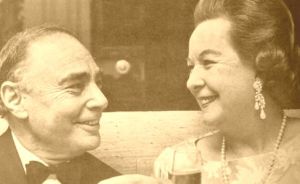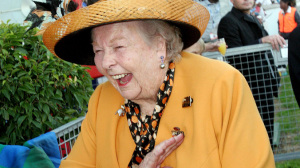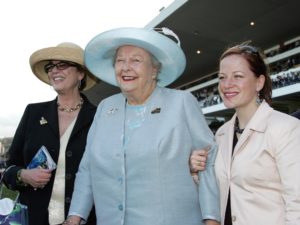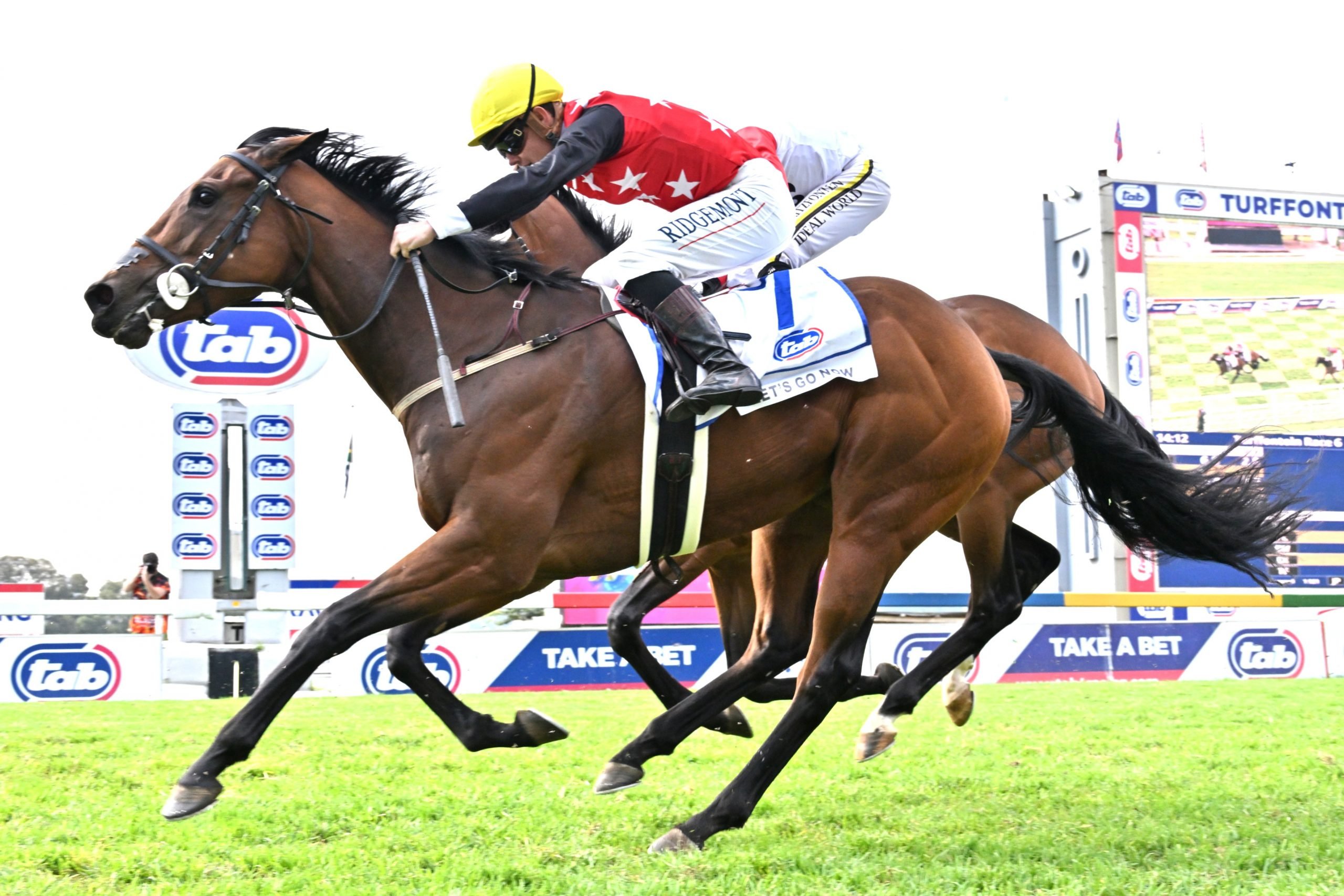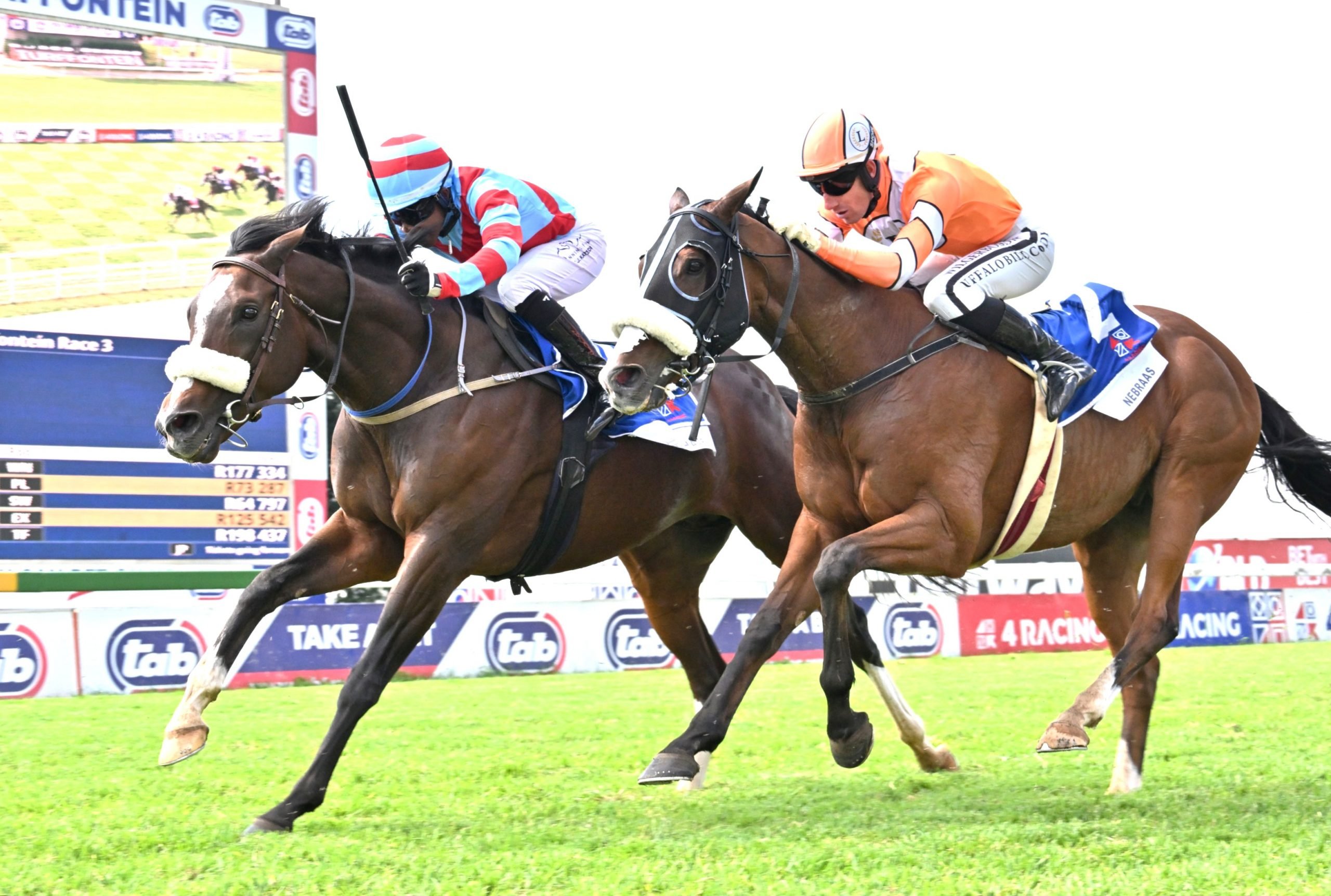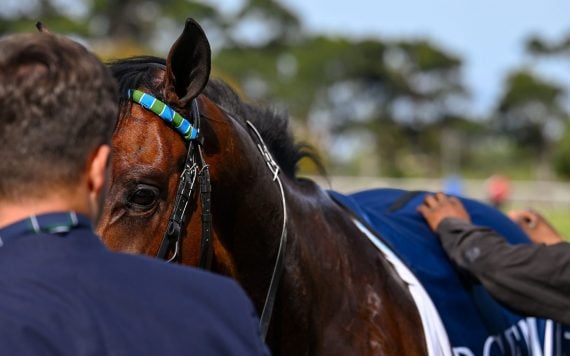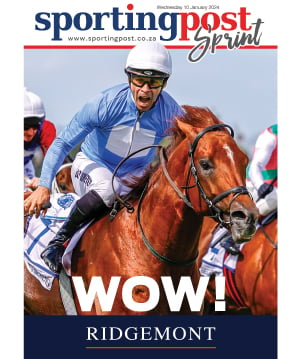About the history of Mauritzfontein Stud
– plucked from articles from before the turn of the century in the now defunct SA Racehorse and Thoroughbred in SA
– and the new direction of today.
Remember the Kimberley Gold Rush? Fortunes were made and famous names emerged in the decades that followed. Barney Barnato, Cecil John Rhodes, and Ernest (later Sir) Oppenheimer.
Many years later, Bridget Oppenheimer (‘Mrs O’ as she is affectionately known) was courted by Sir Ernest’s son Harry during the Second World War, when she was a 2nd Lieutenant in the Women’s Auxiliary Forces, stationed on Robben Island. “One of us had to give up a very promising career in the military when we married, and that one was me!”
Apart from being the heir to a vast mining empire, Harry Oppenheimer was a budding politician. As the representative for Kimberley (the headquarters of the De Beers diamond company) he needed a residence in his constituency. Some 15km outside Kimberley they discovered a charming farm called Mauritzfontein. It had a house that dated back to 1820, wonderfully large pepper trees and old stable block still in use today.
Harry Oppenheimer duly won his seat in Parliament in 1945. A keen polo player with a good eye for a horse, Harry decided to try his luck on the racetrack and Mauritzfontein became stud farm. “A shared interest in marriage” is how Mrs O describes the sport she and her husband enjoyed so much.
1953 Prince Bertrand wins the Met and “I listened to the radio commentary”
Harry Oppenheimer bought two fillies at the 1949 yearling sales – one of them the most expensive lot that year – but both proved useless, but the couple maintained their dedication and sense of humour. Bridget once recounted: “Harry’s father had one horse in training in Kimberley which had rejoiced in the name of Mayonnaise. We gave him Ossian as a present, and he won the Summer Handicap in 1945!
We, on the other hand, had to wait until 1953 for our first big success, which was with Prince Bertrand, a horse we’d bought as a four-year-old in training from the Russ family. He was a remarkable horse. He could read the newspapers – he never won if he was the favourite. We bought him as a four-year-old, to add to our beginners’ stable of two yearlings, which we had acquired a year earlier for no better reason than we thought it would be quite fun to have a bit of an interest in racing. Tim Furness drove him the thousand miles to Cape Town to compete in the Met, and I remember that he was the last horse to work at the final gallops, and nobody bothered to watch him because he was 40/1.
Ladies were not allowed to be members of racing clubs in those days and there wasn’t much encouragement for us to be in the Members’ quarters, so after the horses had paraded, I went back to the car in the picnic area, took off my shoes and hat, and listened to the race on the radio. When the commentator called out Prince Bertrand’s name as the winner, I rushed off towards the winner’s enclosure, only to realise that I was shoeless and hatless and I had to dash back again to dress properly.
Prince Bertrand was rather a wily horse and knew all the tricks of the trade. He made a sharp right turn into the parade ring area, nearly throwing Johnny McCreedy off in the process. He’d been standing there almost ten minutes by the time Harry and I arrived independently to greet him! To add to the excitement, Harry’s father had had a dream that Prince Bertrand would win. So he had put £100 on him and, as the odds were 40 to 1, he won a great deal of money, which pleased him very much indeed.”
Making history – first woman member of Turffontein
The ‘bit of an interest’ was immediately transformed into an on-going enthusiasm that has been a force on South African racetracks ever since. Mrs O became known as the first lady of South African racing with a penchant for being wonderfully outspoken. “Do you know I made history of a sort when I became the first woman member of Turffontein. No, this wasn’t back in the dark ages, it was in the early 80’s. And you can still count the number of woman members on one hand – really, in this day and age. Nevertheless I was thrilled when I was elected to the Johannesburg Turf Club. I was sent a tie, which is fair enough. The numbers don’t justify producing a scarf for women members.”
Mauritzfontein – nothing short of phenomenal
Since its inception, Mauritzfontein has maintained a high quality band of top broodmares and sent out a steady stream of good, sound racehorses.
The results over the years have been nothing short of phenomenal – among numerous other major triumphs are 12 Oaks winners, six Durban July winners, two Met winners, a Triple Tiara winner and the incomparable Horse Chestnut.
The stud owes a good part of its success to the high quality mares that the Oppenheimers purchased in the early days. Mrs O recounts the purchase of Antalya (by Acropolis) from Lord Howard de Walden. “Antalya was the dam of Nalatale, one of the best sprinters we ever bred, and from her we produced Bodrum and Horse Chestnut’s dam, London Wall. Antalya is a place in Turkey and Bodrum is a small port on the Turkish coast. Harry and I were on a cruise and sailed into Bodrum the day Nalatale gave birth to a grey colt. That’s how Bodrum was named.”
Stallions at Mauritzfontein
Mauritzfontein stood a long list of stallions, which Mrs O sums up in her inimitable way.
The first was a British handicapper by Fairway acquired from Lord Rosebery in 1946. He was named Hobo, “our initials – that was the best thing about him,” Bridget quipped.
Janus was the 1950 French 3yo Champion: “a good horse, but with very bad legs”.
Wilwyn made history by being the first horse to get to South Africa by air (in 1959).
When he passed on Ribofilio arrived, owned in partnership with Charlie Engelhard, but “Ribofilio wasn’t at all what we needed.”
Then came an American import, Be Glorious. “He was a very good looking stallion and he produced equally good looking progeny, but they have been useless – unbelievable, isn’t it?”
Free Ride was a good winner in France, but proved the wrong type of stallion for South Africa, producing stamina and little speed. He did help sustain the Oppenheimer stranglehold on the SA Oaks (which they won a dozen times over the years). Free Ride was succeeded by Tiger Fish, after which Col. Pickering and Free Ride’s grey son Bodrum came on board.
All which goes to show how very difficult it is to find a successful stallion, and mares were increasingly sent to outside stallions. Until Fort Wood arrived! Out of blue hen mare Fall Aspen, this French Gr1 winning son of Sadler’s Wells made it big with superstar Horse Chestnut. Now 24 years old, Fort Wood has been a great servant to Mauritzfontein. He was champion sire in 1998/99 and got three Horses Of The Year – Horse Chestnut, Dynasty and Celtic Grove.
When Fort Wood’s daughters began to return to stud, the search for a new stallion was on.
Strike Smartly, full brother to subsequent US Champion sire Smart Strike, had his successes (Bouquet Garni, Smart Banker, Slumdogmillionaire, Cherry On The Cake), but died before his time.
Today all eyes are on Kingmambo stallion Ideal World, whose first crop are (winning) 2yo’s in 2014. Timeform’s essay on Ideal World’s half sister Romantica (Racehorses of 2013) says about the grandam Hasili “her seven pattern/graded winners puts her one behind the modern record set by Fall Aspen”. With Fall Aspen the dam of Fort Wood, and Hasili the grandam of Ideal World, their combined offspring has a lot to live up to!
*
‘The best way to predict the future is to invent it’
2014 will be known as the year Mauritzfontein turns a new leaf. The focus is on ‘commercial’ and there’s a permanent staff of 25 to make it happen.
Guy Murdoch, general manager, assisted by Nigel Page. Gail Page looks after the two-year olds and resting horses, Geraldine Green runs the office. Farrier work is in the hands of Renier Van Rooyen and Johnny Murdoch, while Dr Joe Van Heerden and Dr Piet Swart handle the majority of the veterinary work. David Knight sees to general maintenance.
Breedings are planned using a combination of Tesio, Gr1 Goldmine, successful nicks, and a certain amount by the eye. Guy Murdoch is not too keen on very close inbreeding and considers conformation and performance the most important.
With Mrs O’s recent passing the farm is now in the hands of granddaughter Jessica. Mrs O. famously said “Racing is like the game of snakes and ladders – you’re either on the way down or on the way up!”
It seems pretty clear which direction Mauritzfontein is heading.
There are some twenty yearlings at Nationals, the majority by Ideal World and Fort Wood. All of the stud’s famous families are represented. Roll the dice!


